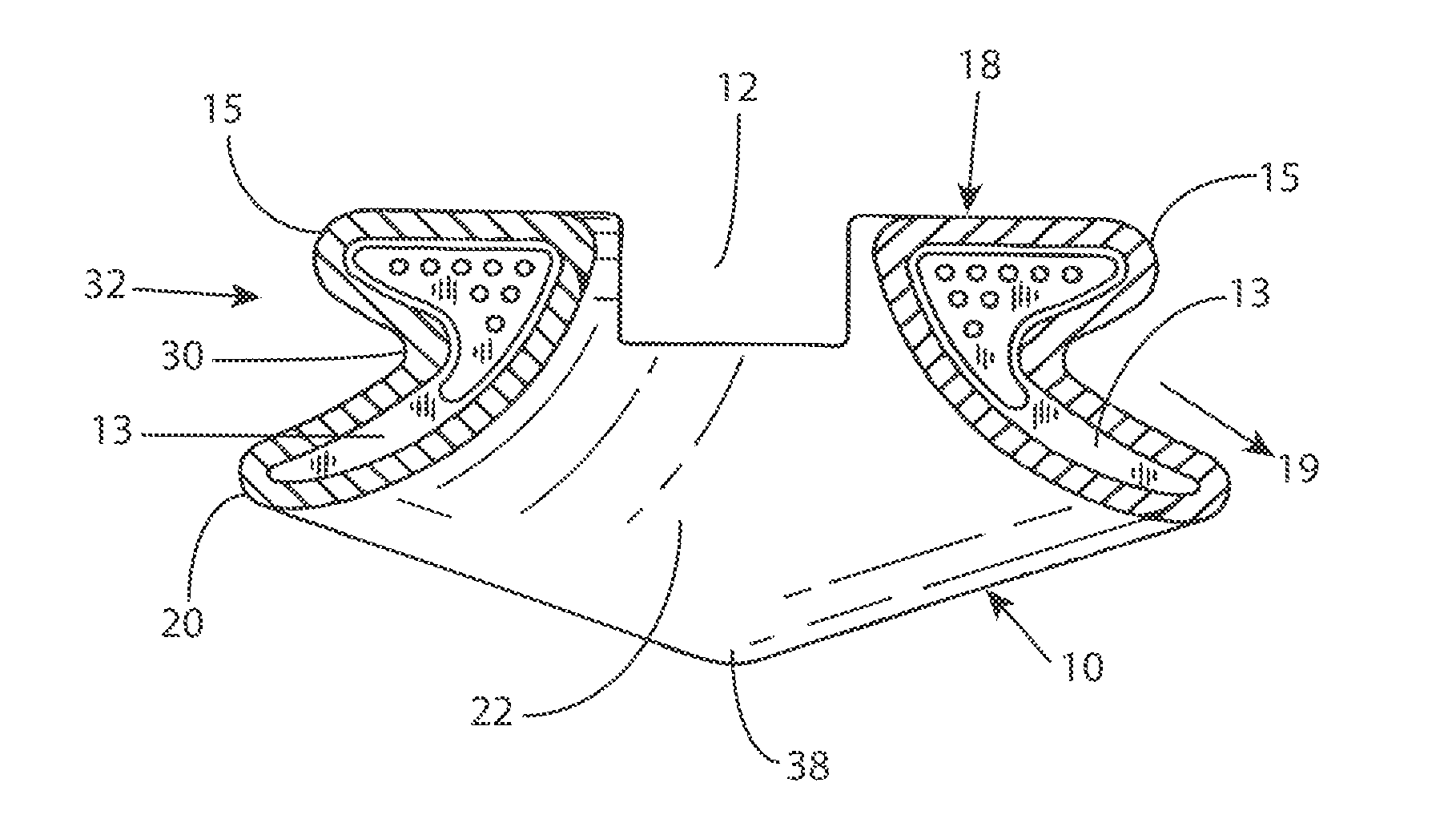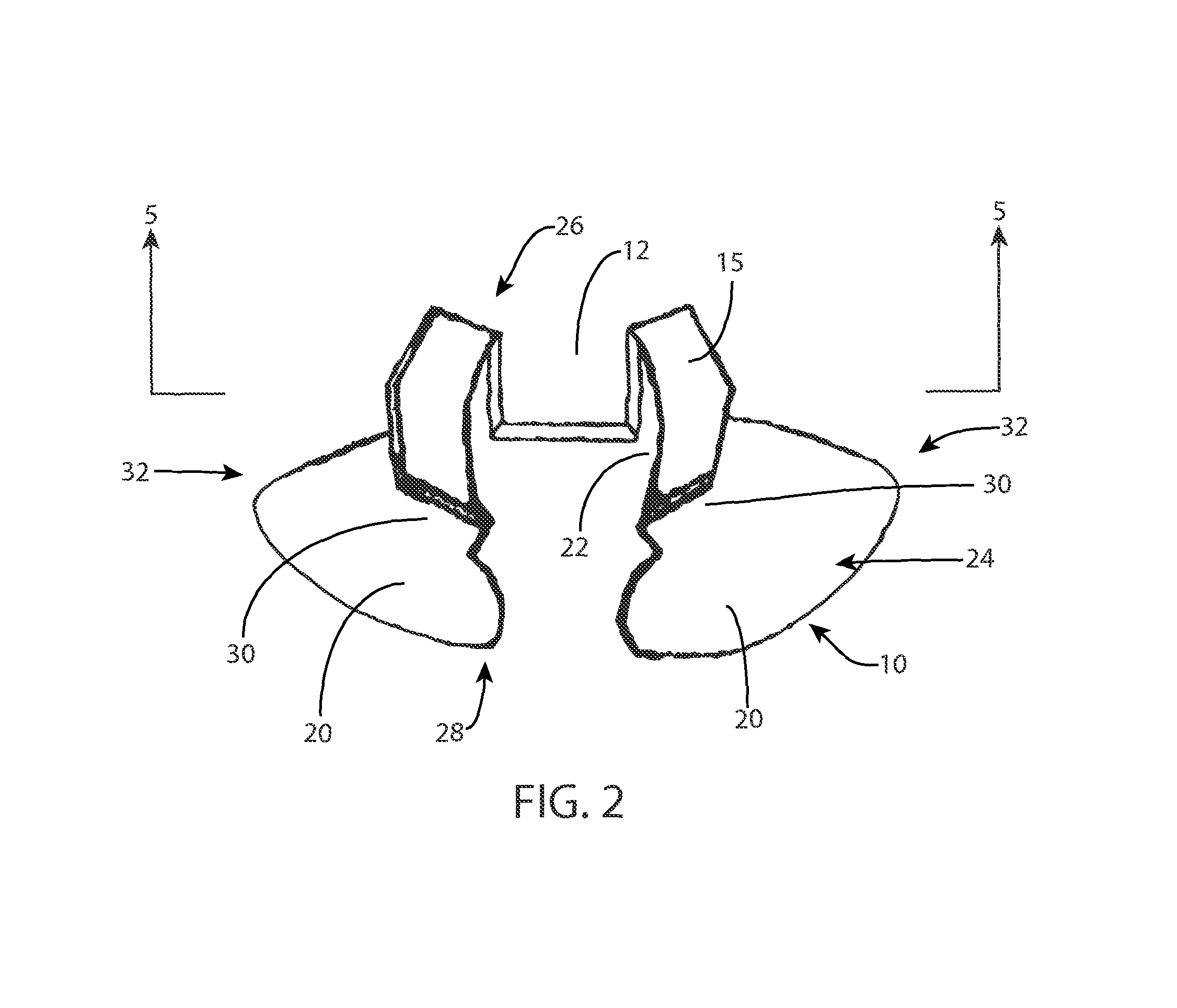Cervical spine protection device
a cervical spine and protection device technology, applied in the direction of eye treatment, protective garments, garments, etc., can solve the problems of quadriplegia, paralysis, and other forms of paralysis, and permanent and irreparable damage to the nerves of the brachial plexus, and equally serious damage to the cervical spine, brachial plexus and/or adjacent areas of the neck and upper back. , to achieve the effect of reducing the possibility of neck injuries, reducing axial
- Summary
- Abstract
- Description
- Claims
- Application Information
AI Technical Summary
Benefits of technology
Problems solved by technology
Method used
Image
Examples
Embodiment Construction
[0021]Referring now to the Figures, FIG. 1 illustrates a front view of the cervical spine protection device 10 of the present invention as worn by a user, which for this embodiment is shown as a football player. FIGS. 3 and 4 illustrate respectively a rear and side view of the device. Device 10 can be constructed of various materials including plastic, polyurethane or foam. It is to be understood that device 10 can come in different sizes depending on the neck size of the player.
[0022]The inventive protection device 10 is designed to be worn in conjunction with a football helmet and football shoulder pads and as illustrated the shape is molded to accommodate the normal anatomy of the upper back and lower cervical spine.
[0023]At a back portion 26 of the device 10, there is an opening 12 and similarly there is an opening 14 at a front portion 28 of the device 10. The purpose of these openings is to allow unrestricted movement of the head and neck during athletic movement. The device 1...
PUM
 Login to View More
Login to View More Abstract
Description
Claims
Application Information
 Login to View More
Login to View More - R&D
- Intellectual Property
- Life Sciences
- Materials
- Tech Scout
- Unparalleled Data Quality
- Higher Quality Content
- 60% Fewer Hallucinations
Browse by: Latest US Patents, China's latest patents, Technical Efficacy Thesaurus, Application Domain, Technology Topic, Popular Technical Reports.
© 2025 PatSnap. All rights reserved.Legal|Privacy policy|Modern Slavery Act Transparency Statement|Sitemap|About US| Contact US: help@patsnap.com



